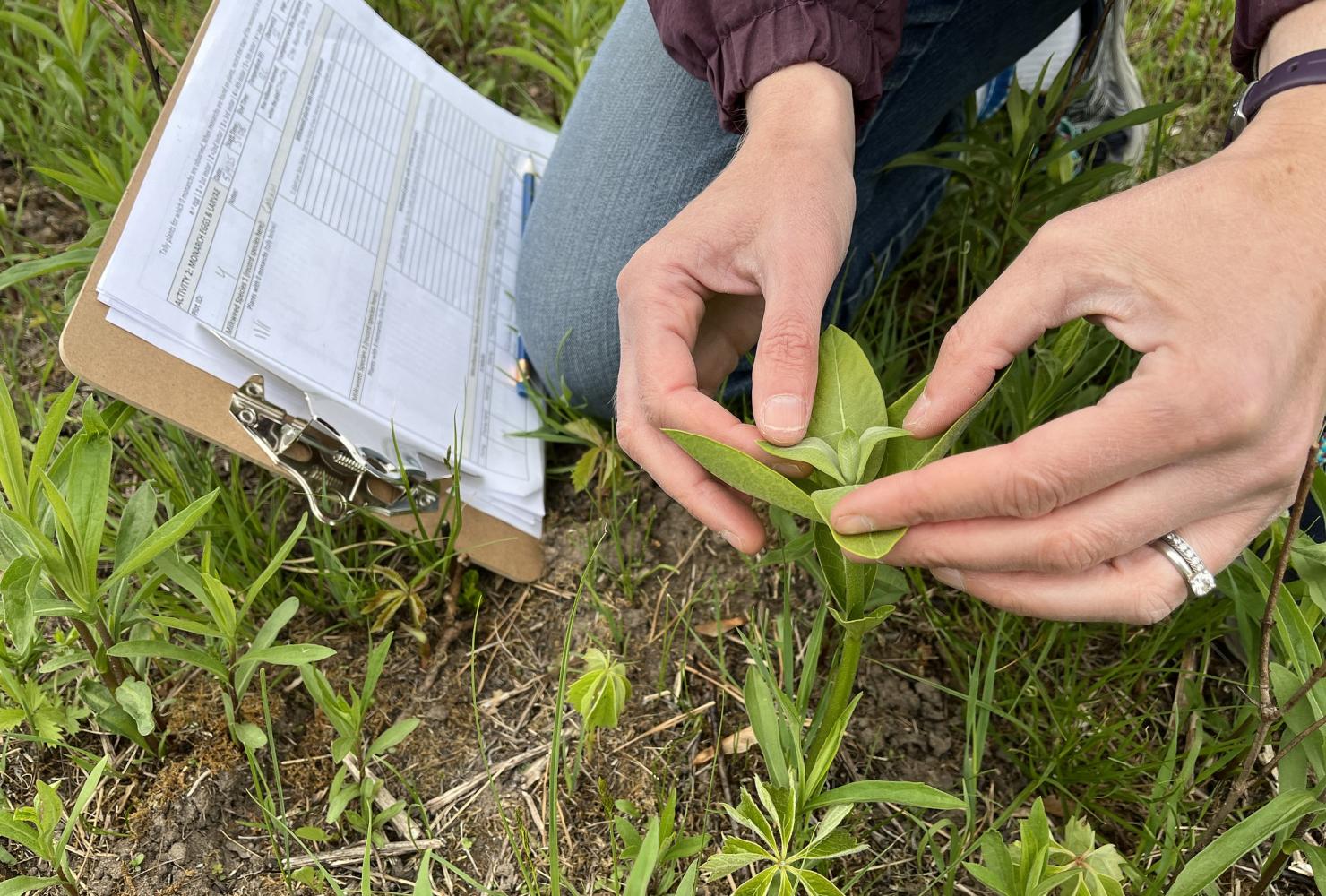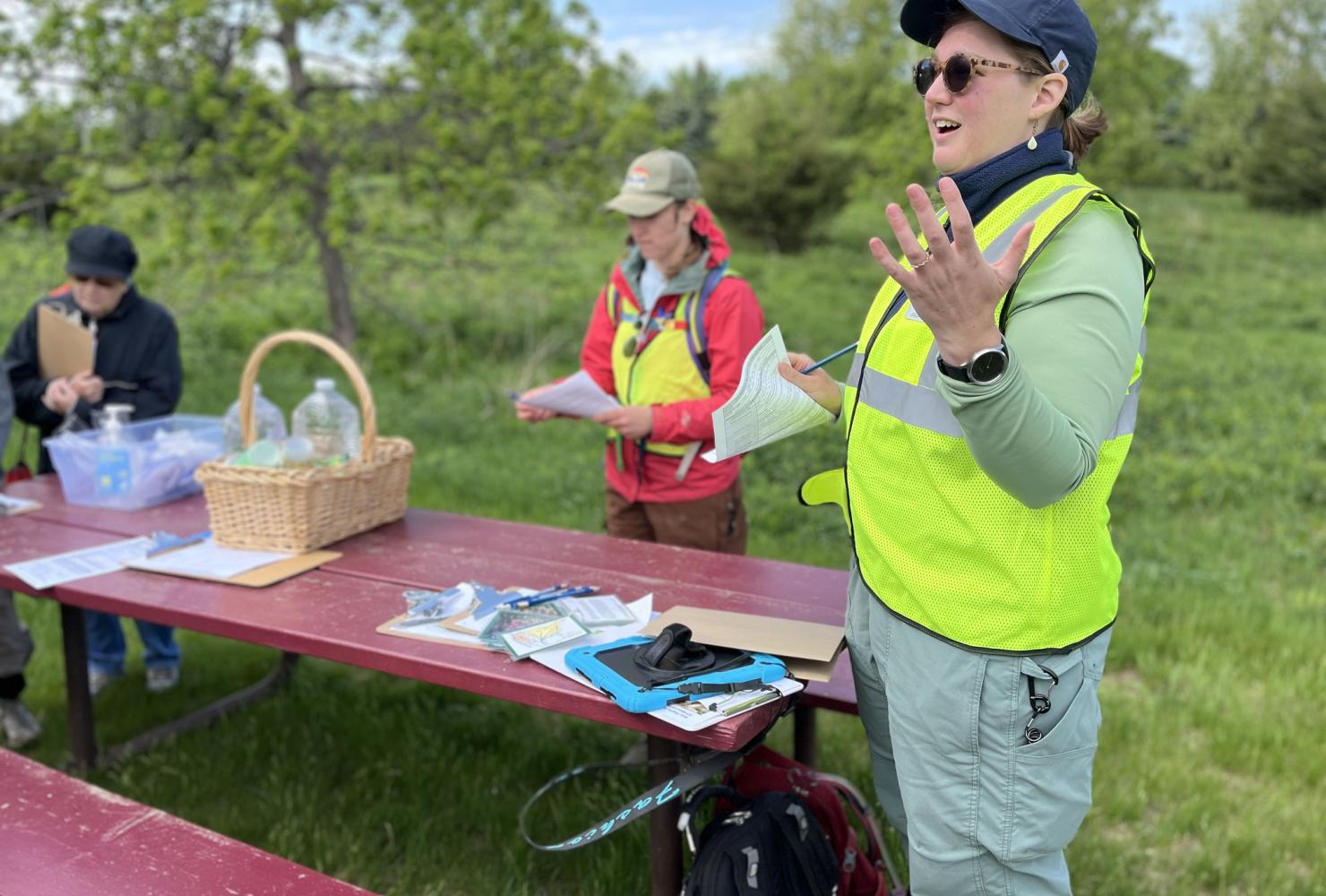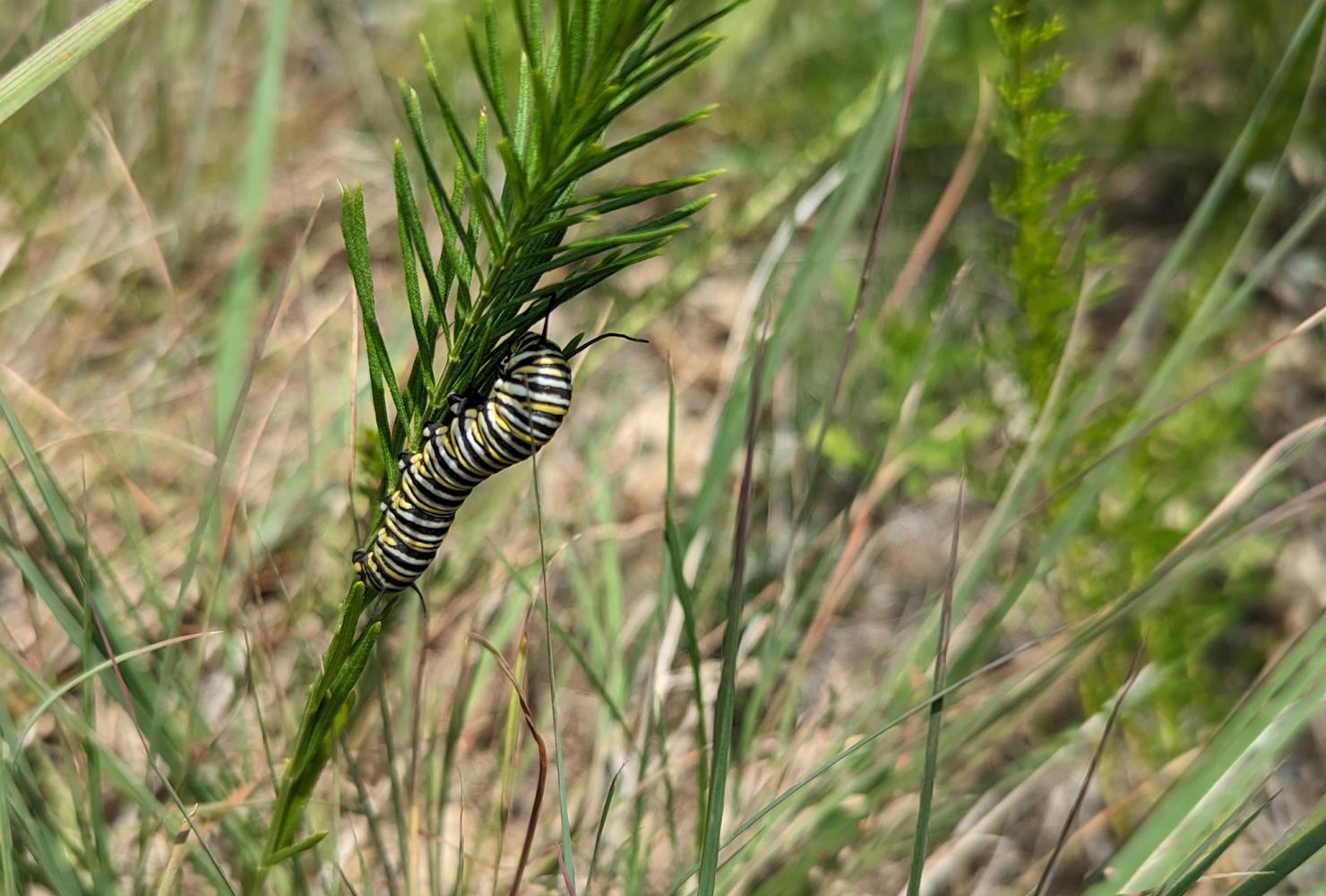FMR volunteer monarch monitoring results show restoration successes

The course of the Mississippi River becomes a bird migration flyway every spring and summer. The ribbon of natural areas along the Mississippi River in Minnesota are a vital part of another important wildlife route: the monarch butterfly's migration to Mexico.
In early November, monarchs arrive at the same groves of oyamel trees in central Mexico's mountains, where their relatives have overwintered in past years. Some of those millions of monarchs hatched on the milkweed in Twin Cities yards and natural areas, or fueled up on our prairie wildflowers' nectar to make the 2,500-mile migration.
But the number of overwintering monarchs in Mexico has dropped over time as habitat loss across the continent, deforestation of monarch overwintering grounds, climate change, pesticides and other threats take their toll.
Volunteers collect robust data, contribute to national database
This year we launched our Pollinator Evaluation Program, expanding our volunteer monitoring initiative to gather more data that can help us better support monarchs.
We're grateful to 35 committed program volunteers whose observations at four FMR habitat restoration sites will help us improve our own habitat restoration management.
Their data is now part of a larger, long-term research project as well, as FMR recently became an official partner of Monarch Joint Venture's Integrated Monarch Monitoring Program. We've aligned our protocols so that we can contribute our data to their database. Scientists and conservation practitioners use this wealth of rigorous, participatory science data to understand monarch population trends and improve conservation outcomes.
Read Monarch Joint Venture's recent article on the program and FMR's participation.
What we found in 2025
Our volunteer monitoring teams checked individual milkweed plants for monarch eggs and larvae 6,600 times from May to September. They found more than 550 monarch eggs and larvae on milkweed leaves and observed 143 adult monarch butterflies.
As FMR Pollinator Biologist and program lead Dr. Julia Leone wrapped up the first year of the Pollinator Evaluation Program, she shared three interesting findings from the data.
A notable share of contributed monarch sightings
Some data are still coming in from contributors to the Integrated Monarch Monitoring Program. However, when Julia crunched the numbers at the end of our field season in September, our survey plots accounted for only a small portion of the full program's plots at the time — around 4% — and our teams had conducted about 10% of the surveys.
She was intrigued to find out that our egg and larvae observations accounted for more than 20% of the total reported across the country by that time.
Julia explains, "There's no way to know for sure why we found more eggs and larvae. However, we can infer that our sites are providing above-average habitat for monarchs. We know that many monitoring sites across the country are randomly selected and may or may not contain milkweed. In contrast, FMR's sites are managed with high-quality pollinator habitat as a primary goal. We also know that we have exceptional monitoring volunteers who have conducted more surveys per monitoring plot than the average contributor."
Regardless, we're proud to contribute as much as we can to this valuable national database.
Some restoration efforts are already paying off
River Heights Park in Inver Grove Heights is a small restoration site — just over 7 acres — but our volunteers found a high abundance of monarchs there.
"When I first scouted River Heights Park, there was hardly any milkweed there," Julia explains. But in the last year or so, restoration volunteers and contractors have planted 750 milkweed plugs and spread 2 pounds of milkweed seeds. These efforts — planting so much milkweed along with other native plants and enhancement efforts — have really paid off.
In contrast, we observed fewer monarchs at Vermillion River Linear Park in Hastings, though the park's size is nearly 10 times larger.
But when Julia looked at the number of monarchs observed per milkweed, she found similar numbers between the two parks. On average, for both sites, volunteers spotted a monarch on every seventh available milkweed plant.
These data point to the need for more milkweed plants at Vermillion River Linear Park. "It's so helpful to have data like this as we make decisions about plantings. We've already planned a prescribed burn and more pollinator and milkweed plantings at this park over the next two years," Julia notes.
An end-of-summer upswing of butterflies
As summer wore on, we saw more and more adult monarchs. Julia explains, "An increase in adult monarch butterflies across the summer is a good sign! The monarchs we see in August and September are the final generation that will migrate south."
Monarchs born in spring and summer live for only a few weeks. We see multiple generations of butterflies from May to August. But adult monarchs emerging at the end of the summer are physiologically different. They live through the winter and into spring when they begin the journey north again.
"More monarch butterflies alive right before migration will contribute to higher population numbers at the overwintering sites this winter," she says.

By restoring habitat along the monarch's route in Minnesota, we're helping ensure a successful migration to Mexico, where they overwinter together in the mountains. (Photo by Ernesto RƎIƎZ)
Fall migration is underway!
The monarch's migration feat can't happen without quality habitat all along the route. Remnant and restored prairie corridors along the Mississippi River in the metro are vital for monarchs before and during their migration.
Explore Journey North's map to watch sightings of roosting monarchs across the continent over the past few months.
When the monarchs begin their flight north again next spring, we'll be back in the field too, planting more milkweed and wildflowers where they're needed, and supporting our volunteers through another monarch monitoring season.







